$550 worth of AirPods Max — or $550 of wired alternatives?
Wired or wireless?

The AirPods Max are a stunning pair of headphones when you yank them from the box — a weighty headset constructed from aluminum, stainless steel, and an exotic feeling headband, they feel every bit the luxury car of the headphones world. Like a sleek, comfortable Mercedes, they give you everything you could want without too much compromise in any one area. A nice S class, one might say. Expensive, yes — but you get what you pay for.
Continuing the car analogy for a moment, however, what about a similarly priced pair of over-ear wired headphones? What about something that makes certain compromises so that it can really excel in one specific area — like a stripped-back Lamborghini, they lack some convenience but where the car is lightning fast, the headphones sound really good.
To find out, we’ve got one such headset to put up against the AirPods Max — the ThieAudio Wraith. An over-ear headset that has a wire with a jack on the end (that won’t even plug into your 3.5mm jacked iPhone 7, I’m afraid) and a headband that looks a little like scaffolding. They’re also really, really good. At $550, they’re the same price as the AirPods Max, but should you ditch the convenience for the sound?
Price and availability

The AirPods Max are… not cheap. Even as they age more every year, they remain either at their original $550 price, or they see a discount at places like Amazon down to $470. That is, while not the most you can spend on Bluetooth headphones in 2023, a lot of money. Getting hold of them, however, is extremely simple — just hop on over to an Apple Store, Amazon, or Target, and nab a pair off the shelf at a brick-and-mortar store. Easy.
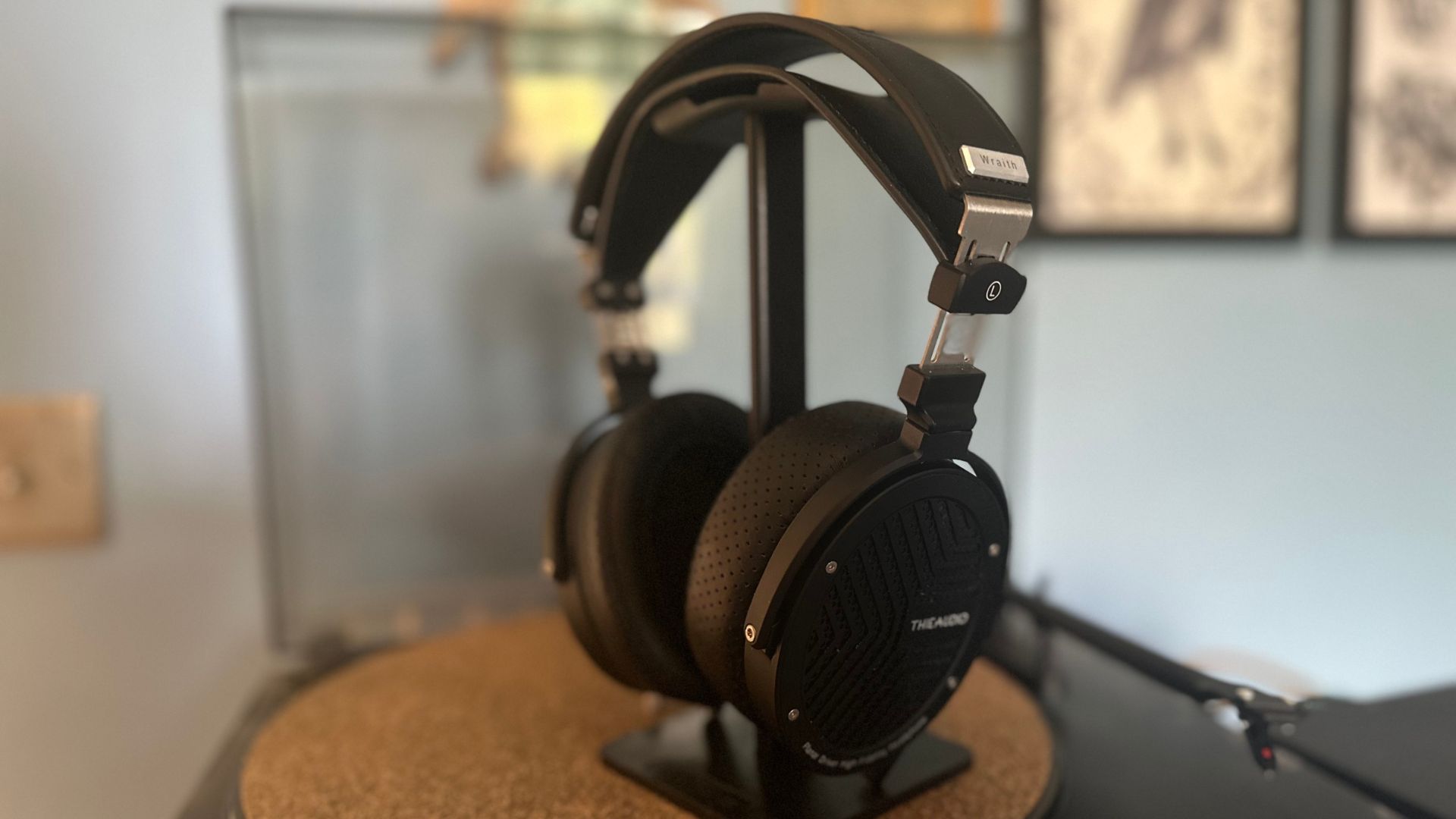
The Wraith are $550; still expensive, and the same price as the AirPods Max. They don’t see too many discounts either, and their nature as wired headphones means they lack Bluetooth circuitry. Getting hold of them is a bit more of a pain as well — you can only pick them up from a handful of different, more niche audio outlets or from the Thieaudio website itself.
So you’ll pay the same and they’re harder to find — so why might you want the Audiophile over ears instead of the AirPods Max?
Build and fit
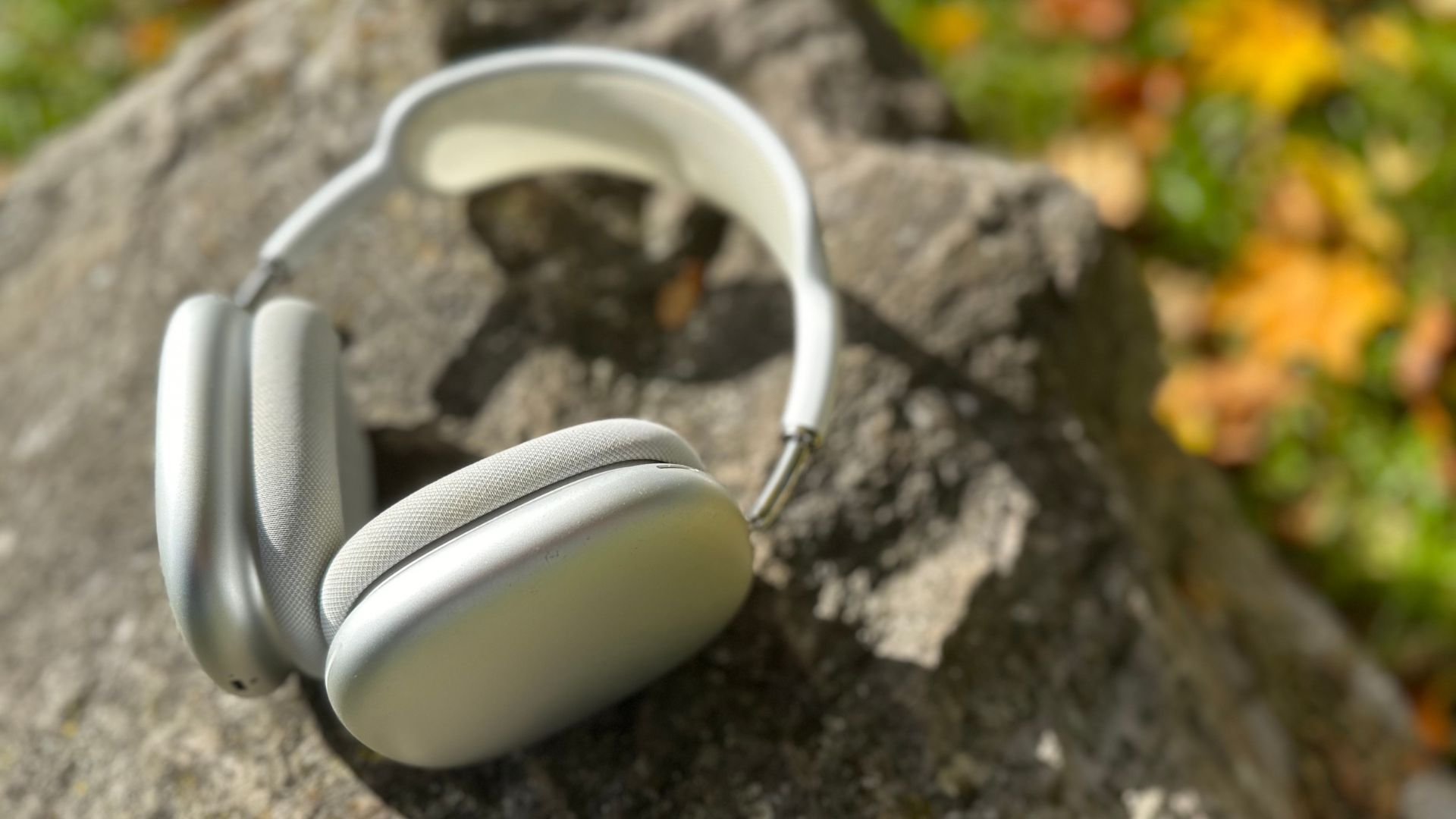
The AirPods Max are built well, there’s no denying that. Those aluminum earcups are stunning in hand, and the weird mesh headband feels premium. They’re heavy too, which adds to the premium feeling, and the sliding earcup adjusters are smooth and feel wicked in the hand.
The whole package feels incredible, and it extends to the earpads themselves. They are magnetically attached so that you can slip them on and off the headphones when you need to clean them — and frequent cleaning they may well need.
See, they’re made of a kind of fabric covering that somehow sucks makeup off a face from the second they sit on your head. Add that to the considerable weight that sends them slowly down the sides of your head, and you’ve got a recipe for not only smeared foundation, but earcups covered with skin shades. Its… Irksome, to say the least.
Overall, however, you can’t really complain too much about the build of the AirPods Max themselves. They feel incredible in the hand, and there’s something about them that inspires confidence — until you grab the case.

I could write entire essays on the woeful ‘case’ that comes with the AirPods Max — but all I really need to say here is that it’s not very good. It’s a kind of magnetically closing slipcover that just about covers the hard metal parts of the headphones, but leaves the delicate feeling trampoline-like headband open to the elements, and the interior of your bag and whatever sharp things may lie within. Like zippers.
But here’s the thing in this case — where usually I’d decry the lack of case as one of the worst things going and then demonstrate the other excellent cases you can get with other headphones on the market, here I have to make a different statement: At least they’ve actually got one.
See, the Wraith have no case. No leather pouch, no hard case, no suede-lined carrying pouch — nada. That’s because, unlike the AirPods Max, these are designed to stay within the four walls of your home, and even more preferably, in one spot. They need no case because they are like a permanent fixture of a listening space, hung from a headphone stand. Still, it would be a nice addition for when you need to move them about, or if you need to store them in a drawer; we don’t all have the extra space to keep the box around. I know I don’t.

Beyond the lack of a case, the Wraith are stunning. Upon initial inspection, there is something of the scaffolding about them, with large metal components that all lock together with industrial bolts and screws. I, personally, love the way they look, although I can imagine that some might not be quite as impressed with the styling.
The top leather panel gives way to the main headband underneath, which you can adjust easily with solid increments. That wide headband feels soft and supple for a nicely comfortable head feel, and it supports them well enough that their otherwise considerable weight doesn’t make for any significant problems with slippage or sagging.
The earcups are made out of solid aluminum, the open sides milled with a kind of grill pattern. They swivel on metal hinges to make them more comfortable as well as letting them sit completely flat.
Then there’s the cable (Because these have one of those), and it’s a twisting, braided affair. It clips into the headphones with a satisfying click, and then sits in place with a pair of tiny jack plugs. Altogether, they’re a stunningly built pair of headphones that feel incredible on the head, their wide headband distributing weight perfectly.
Compare the two next to each other, and you’ll find two perfectly dimetric design philosophies.
There are a couple of different earcup options, although I wouldn’t recommend changing them out. The ones that come attached to the headphones out of the box are perfectly comfortable and good, but they attach with Velcro. As soon as that velcro is opened, the seal around the headphones and cushions is going to be compromised — and you’ll lose a little low-end grunt.
Compare the two next to each other, and you’ll find two perfectly dimetric design philosophies. The AirPods are a symbol of simplicity and user-friendly design. Each control is obvious, and there's not much to confuse the design of the headphones. The Wraith, on the other hand, are a slightly busier affair, with more emphasis on looking interesting. They are simple from a lack of need for controls — but given they won’t be leaving the house very often, the only person they need please is the person who has bought them.
Each give you your $550 worth, that’s for sure — both feel premium, and you won’t feel like you’ve overspent on either.
Features
AirPods Max are the only pair with any kind of real ‘Features’ and this is where you might want to focus if you’re looking for a pair of expensive headphones that could be called more ‘convenient’. For starters, there’s something called ‘Bluetooth’ on board that makes them magical, or something.
They’re wireless headphones, that's the key feature. You connect them to your phone and then you can listen to music without the need for a cable, dongle, or any other kind of wired connection. It’s not that, however, that sets them out from the sea of wireless over-ear headphones; It's that they really do have a little bit of magic — some AirPods magic.
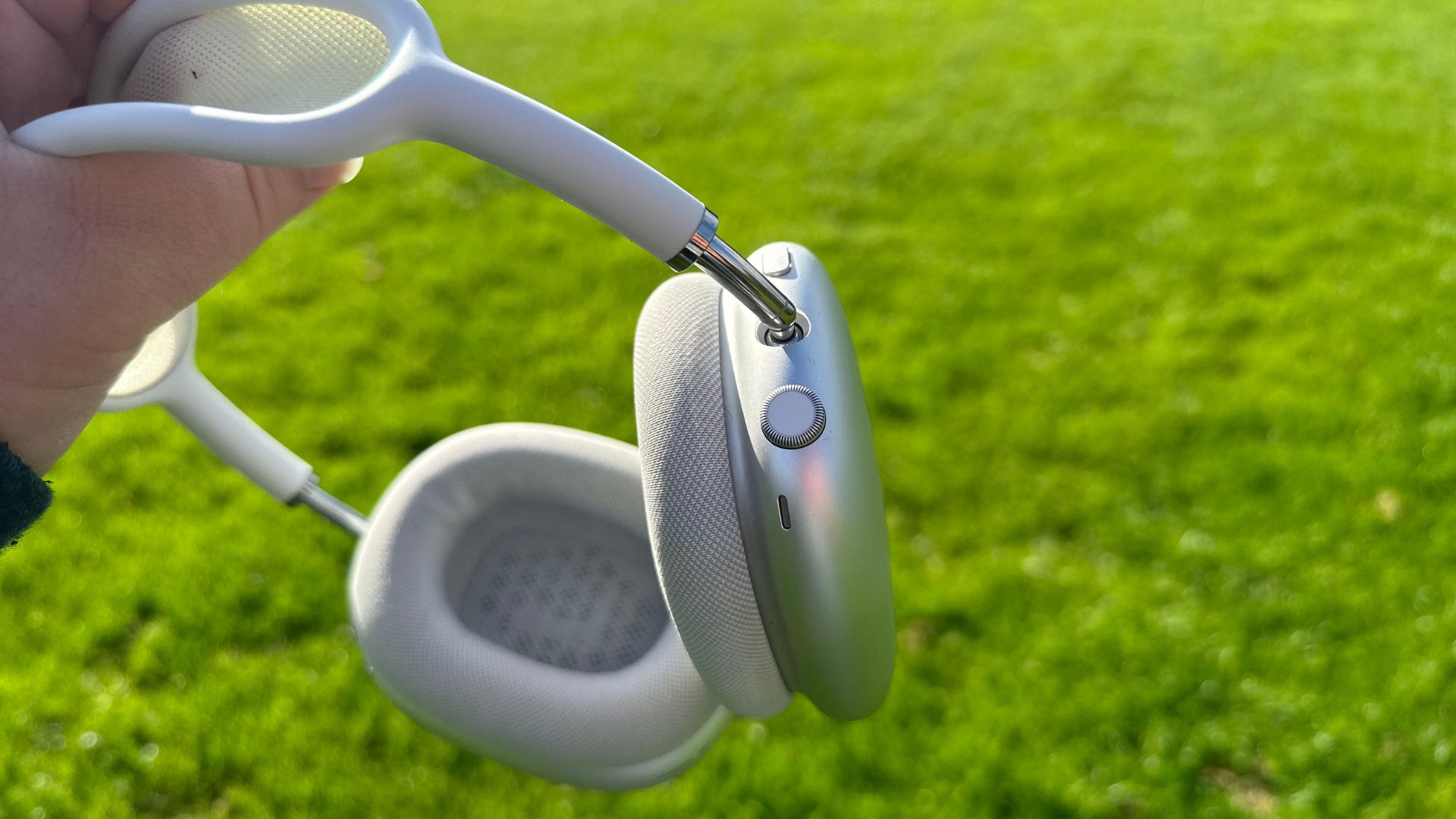
Slip them out of their case, and they appear on a nearby iPhone, iPad, Mac, or even Apple TV, and you won’t need to go into your Bluetooth settings to get them working. They switch depending on which one of your nearby devices is playing media, and they offer Apple-exclusive features that other connected devices don’t provide.
That’s things like Spatial Audio, a controversial feature that I find is much better for movies than it is for Music. The idea is to make the music sound like it's coming from all around you, rather than just from the left and the right. It’s a feature that is up and coming in the headphone space, with loads of different manufacturers bringing their own version to the table.
Apple, however, seems to have been the most successful, with a litany of formatted tracks on its Apple Music streaming service. The AirPods Max are going to be one of the best ways to listen to the format, with larger drivers in the headphones to make use of the feature. Again, this is not one for music in my eyes — it’s just no where near as spacious sounding as a pair of well-separated stereo headphones. For movies, however, it does a good job of separating out the different elements of a surround sound setup and pumping it into your ears.
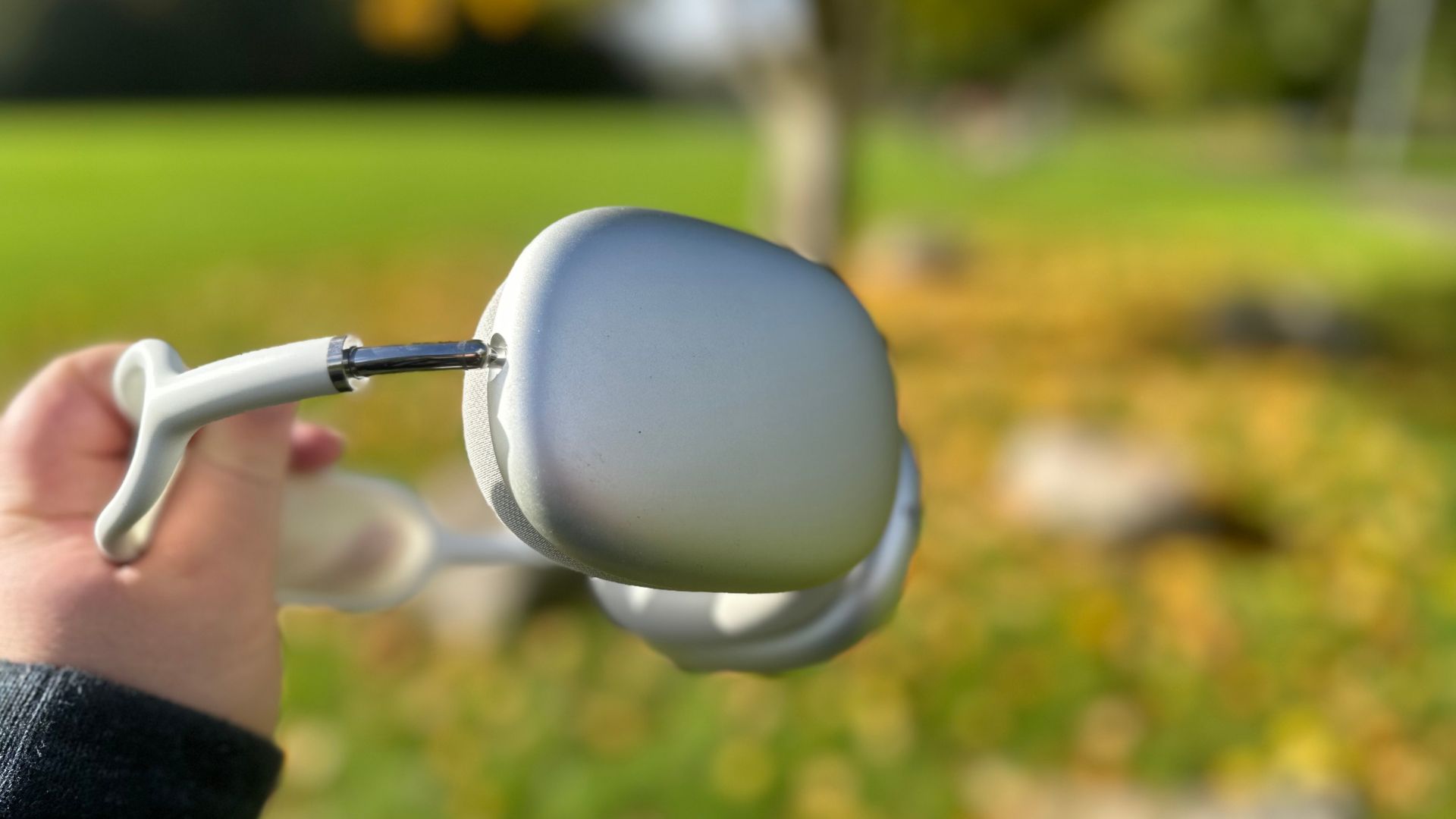
They’re also noise canceling, and the noise canceling is still very good despite their now aging algorithm. They might not be the best at it anymore, but they’re still going to block out the noise of the bus when you go for a walk.
The Wraith, on the other hand, don’t have anything like this — they are, to put simply, just a pair of headphones. There’s no fancy chip on board, no wireless, no noise canceling. Just some really interesting audio drivers and a particular kind of cable to make them sound really, really good.
Because that’s where the focus of the Wraith is — sounding incredible. At the core of this are the Planar Magnetic drivers, a kind of headphone driver that is designed to have great instrument separation, and give greater bass extension. Whether they work or not we’ll find out later, but it’s a stand-out feature that worth noting.
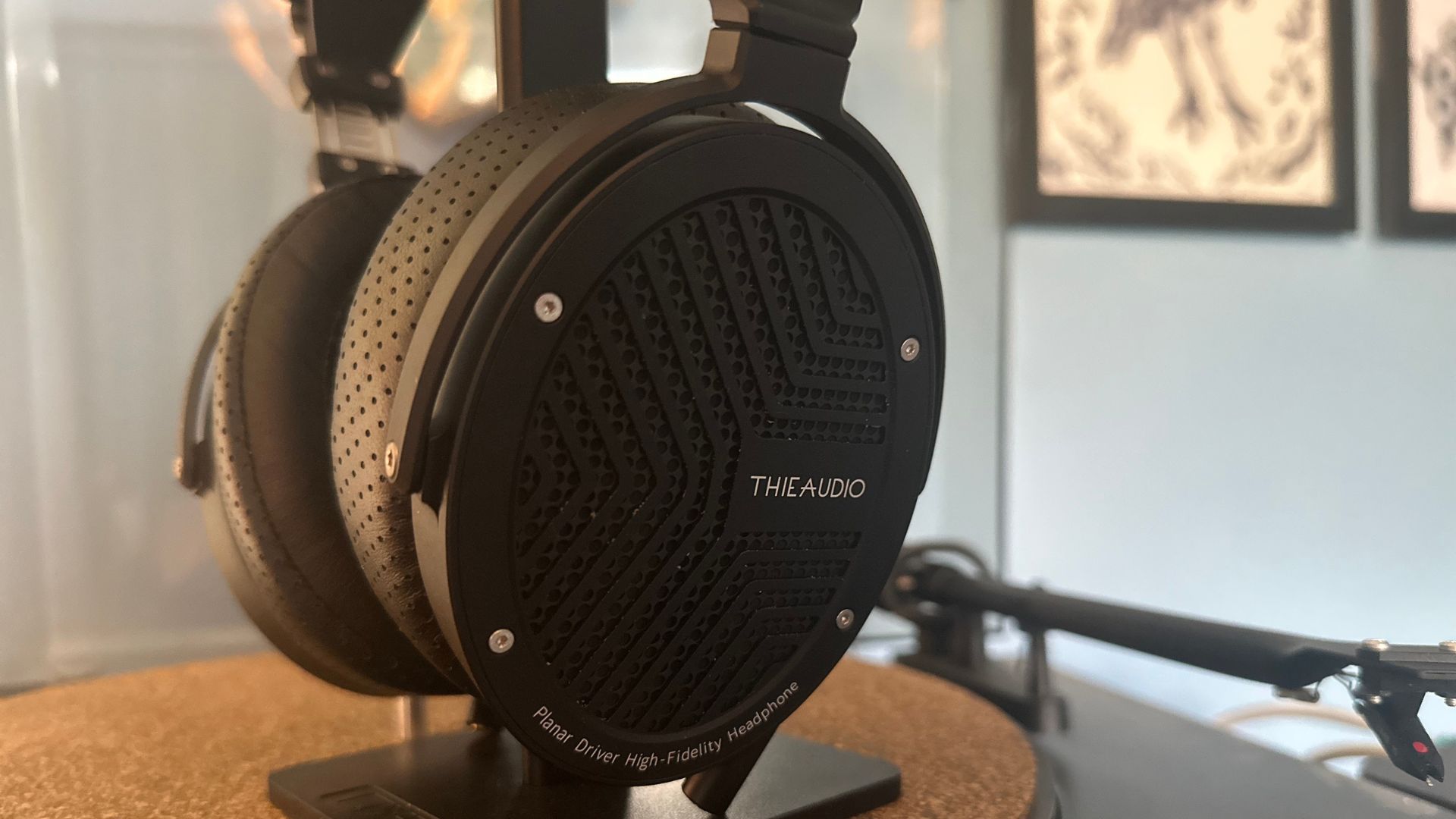
The other feature is one that both makes them extremely tempting to mad audiophiles — the balanced cable that comes in the box. There is no other option, you can only use this braided, separated cable, and for some that’s going to be a big selling point. A balanced cable separates the two audio streams, the left, and the right, into two different positive and negative connections, making for less distortion. Most people aren’t going to care, however, and the weird 4.5mm headphone jack on the other end is only going to serve to confuse, annoy, and ultimately put off.
Features-wise, there’s not much you can say beyond the Apple headphones coming out on top — although it will depend on what you’re looking for. If you want something that sounds fine but puts most of its effort into convenience, then the AirPods Max are the only way to go. For the Wraith, however, who’s focus is out and out sonic performance, then the story becomes a little trickier.
Sound quality
This is where things should get really interesting. This is the bit where we take the two cars out for a track day, see which one is quicker and more fun. Whether the compromise made by the wired, open-ear headphones is worth the extra sound quality.
First, a couple of things about the Wraith, and what sets them apart sonically from some other headphones. First is the aforementioned balanced cable that’s going to reduce distortion, and second is the thing that’s going to make them, in effect, an indoor-only headphone — they’re open back. Now, I’ve mentioned this a couple of times throughout, but now I can really dial in and give a deeper explanation as to what this really means.
Open-backs are designed to allow the drivers in headphones to breathe more, and avoid making closed-in vacuums.
Open-backs are designed to allow the drivers in headphones to breathe more, and avoid making closed-in vacuums. That means that the soundstage is often wider, with better instrument separation. It also means that a little bass is lost out of the outsides of the headphones, but lots of manufacturers and headphone tuners opt for a warmer sound signature to compensate for the loss in bass frequencies.
The Wraith have a twofer when it comes to Audiophile preferences on the ol’ headphone wishlist: Open back earcups (which we’ve just talked about) and Planar magnetic drivers (which we talked a bit about in features). But how much do these help the way that the headphones sound when compared to one another in terms of soundstage, sound quality, and frequency response? To find out, I’m going to be going super elaborate.

We’ll be using the same songs for each, and I’ll switch between the two headphones three times to really get an idea of how each sound. That way we can really compare how the two sound, and whether the extra quality provided by the Wraith is worth it. I’ll be testing them both at their best — both will be playing Qobuz’s top-quality audio (Although the AirPods Max aren’t able to play the proper hi-res — Bluetooth limitations and all that), and the Wraith will be going through my portable DAC, plugged into an iPhone 14 Pro Max over USB-C.
Let's get started with something thick, bassy, and impactful — Charlotte De Witte with her bouncing trance. Overdrive is the track of choice, a great mix of synthetic drums, layered voice samples, and thick, pumping bass. The Wraith, despite their open-back nature, handle the track with aplomb. The hi-hats hit with edge and purpose, cutting through the otherwise impenetrable bass layer. The mids cope easily with the sampled vocal line, giving definition to the gentleman asking you to ‘live wild and free’. And then it’s all layered above this super chunky, powerful bass reproduction. Where some headphones struggle with the sub-bass, the stuff that makes your head wobble, the Wraith feel like they’re giving your brain a jiggle. Thanks to those planar magnetic drivers, bass extension is excellent, and doesn’t lose any of its impact the further down you go.
The soundstage is where they really stand out. This isn’t the widest track out there, but it really feels like there’s a pair of massive stereo speakers nearby that are letting the music feel the room. They feel unrestricted, untethered. The next best thing to a pair of massive speakers and subwoofer.

The AirPods Max’s performance is nothing to be sniffed at, however. There’s lots of bass here as well, and the Max are able to replicate a decent amount of the lower tones at play. The hi-hats are sharp, if a little overpowered by the bass, and the vocal line is all present and correct. There is a little impact lost, however, despite their closed-back nature. While it traps in the bass notes, allowing for some extra warmth, a little of the sub-bass is lost somewhere along the line.
The issue is that compared to the performance of the Wraith, the AirPods feel one-note. There is little dynamism to the headphones. When the music should be quiet, it's the same volume as when its supposed to be loud. There’s some kind of compression that happens between the music leaving your iPhone, MacBook, or iPad that restricts things — including the soundstage. Don’t get me wrong, the soundstage on the AirPods Max is better than most Bluetooth noise-canceling headphones, but compared to a pair of open-back wired headphones, it’s like the music sits in the middle of your head.
To really test out the soundstage we’ll give some classical music a whirl — Stravinsky’s Rite of Spring, as played by the Budapest Festival Orchestra. This will show us how dynamic the headphones can be as well, with suitably quiet parts to compare to the louder bits. This time, the AirPods first. Instrument separation is good, better than most, in fact, and places the different parts of the orchestra in the right spots. What should be a whole, wide orchestra, however, feels like it’s been squished in, like all the instrumentalists have had to move their chairs together for some reason. While there is a little room for the music to breathe, the AirPods still lack a certain spaciousness that Classical music demands.

Dynamism too is a problem now, with the quiet parts giving way to loud parts of equal volume. This is not something that most people will notice when just handed a pair of headphones — but slip on the Wraith, and the difference is night and day.
The Wraith are able to give you that spread of the orchestra. The opening horns are exquisitely detailed, but also placed perfectly within the orchestra. When the rest of the ensemble get going, it’s like being sat next to the conductor, each instrument possible to point out with some accuracy. The Oboe dances in the players seat, the strings working from their spot to give edge and uncertainty to the track. It’s a stunning performance, and highlights the ability of the headphones to really separate the different elements of the track.
Dynamically they’re stellar too. The track builds in volume and cadence, coming to a mid-track crescendo of tumbling strings and wind. Compared to the compressed nature of the AirPods max sound signature, it’s a massive difference.
The opening horns are exquisitely detailed, but also placed perfectly within the orchestra.
Finally, something indulgent, something just for me. Dark Fortress's Pali Aike needs weight, mid-range bite, and presence. The suitably named in this case Wraith are up first, and as you might expect it's another stunning performance. The distorted guitars are perfectly sharp and edgy, yet wide in the mid-range in all the right places. Morean’s growls are pinpoint and terrifying, while the drums pile on the noise. It’s a pummeling wall of noise, yet each instrument is still separated enough to point out in the mix. Excellent stuff.
The AirPods Max… Do their best. There’s some separation between the instruments, but as the track builds they have a tendency to get lost in the mix. The cymbals in particular slip away occasionally, and the guitars lack a certain amount of edge and grunt. They’re fine, but the Wraith have them completely smashed.
The AirPods do have a little something called Spatial Audio on board — does that make any difference? In a word; no. In a few more, slightly less exciting words, it can actually make music sound worse. See, where there are tracks that are designed for Spatial Audio, it's fine. It still doesn't match the soundstage of a good pair of wired, open-back cans like the Wraith, but at least it works. Turn the feature on for music not mixed for spatial audio, however, and you'll find a thin, hollow attempt at surround sound. Not a headphone seller then.
Look, this is all very nitpicky when it all comes down to it — but slip the two headphones on one after the other, and you’ll soon realize the difference in performance. If you want to have the best-sounding pair of headphones possible for listening at home, then something like the Wraith are the perfect thing to look for. Solid sound and portability more your speed? Then the AirPods Max are going to be fine.
Now, that begs the question — are the gains in sound quality worth the compromise in convenience? I’d say yes — although you’ll really have to try them out to work out what your answer is.
Extra spends
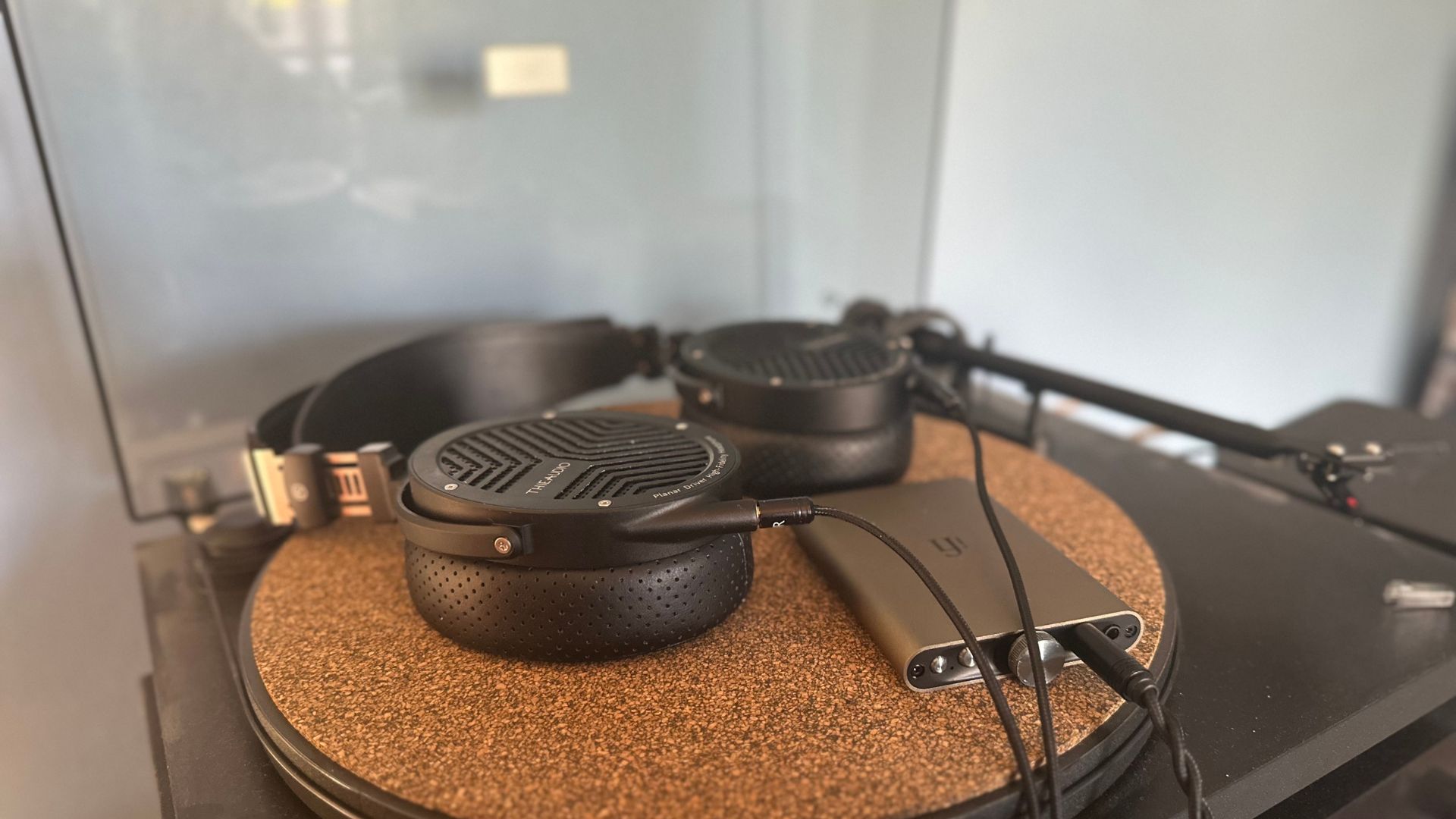
Another thing that you’ll have to consider with these headphones is extra spending — or at least, for one of these pairs of headphones you might have to invest a little more than the others. The AirPods aren’t going to need anything extra, unless you want to get a better case for the headphones. The Wraith, however, are a different story.
At the very least, you need a device with a 4.5mm jack connector on board. That could be a decent dongle, an adapter so that they plug into your MacBook, or even a separate device that can take the standard. You’ll be glad you did, of course, but that’s still an extra spend.
That’s an extra that could cost you anywhere from $10 for a dongle or adapter, all the way to hundreds for a separate DAC or DAP (Digital Audio Player, like a very fancy MP3 player). That means that no matter what, you’re going to be paying more for the Wraith than you might for the AirPods Max — and that is a big consideration. In my case, I was lucky enough to have a range of different things that take that 4.5mm headphone jack, but you might not be.
Final thoughts
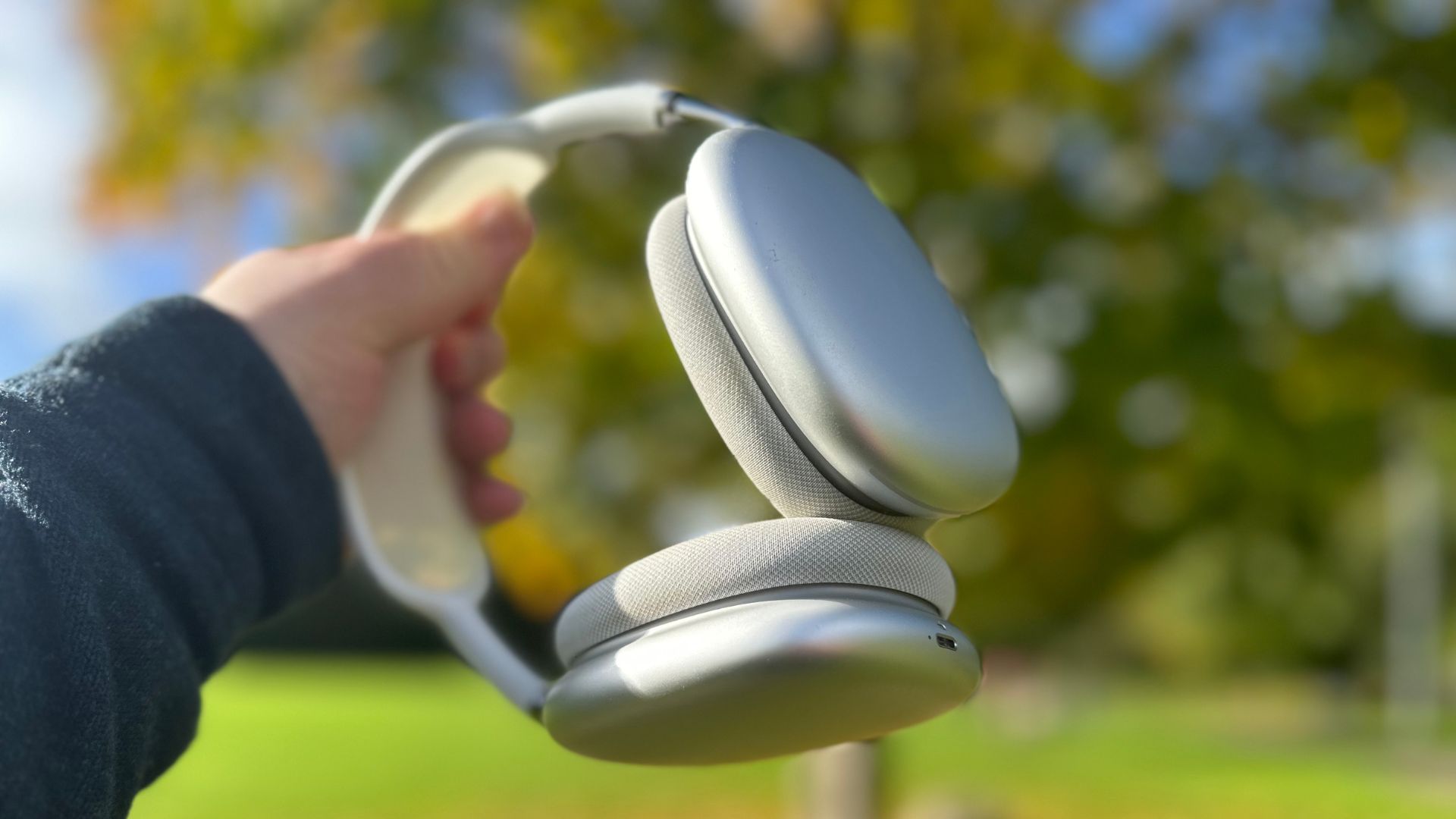
Ok, so this is pretty much exactly what I thought would happen — both are worth the money, but whether they are worth it for you is down to a number of different factors. The AirPods Max are put together for those who want a pair of headphones that, more than anything else is super convenient. They sound good, but they aren’t the be-all and end-all of headphone sound quality. For iPhone users and those who are invested in the Apple ecosystem, the AirPods Max are perhaps the only way to go.
On the other hand, if you want the best sounding headphones you can buy you should go for something like the ThieAudio Wraith. They will be more of a pain in the bum, with wires, listening formats, dongles, and DACs and Amps, but overall you’ll get the best sound quality possible. Like living with a soft top sports car day to day, you’ll get annoyed sometimes at the inconveniences of the format, but for the moments they shine you’ll be more than happy with your decision.
iMore offers spot-on advice and guidance from our team of experts, with decades of Apple device experience to lean on. Learn more with iMore!

As iMore's Senior Staff writer, Tammy uses her background in audio and Masters in screenwriting to pen engaging product reviews and informative buying guides. The resident audiophile (or audio weirdo), she's got an eye for detail and a love of top-quality sound. Apple is her bread and butter, with attention on HomeKit and Apple iPhone and Mac hardware. You won't find her far away from a keyboard even outside of working at iMore – in her spare time, she spends her free time writing feature-length and TV screenplays. Also known to enjoy driving digital cars around virtual circuits, to varying degrees of success. Just don't ask her about AirPods Max - you probably won't like her answer.
